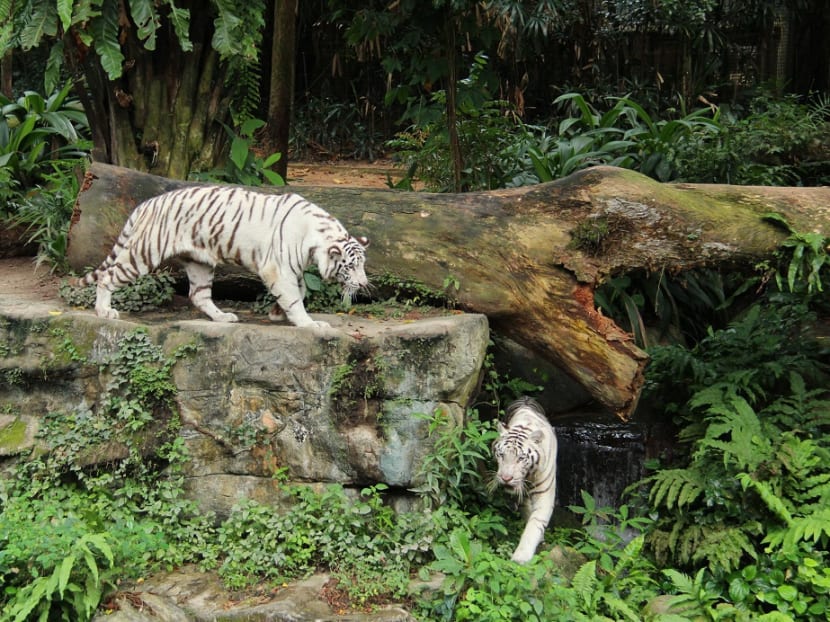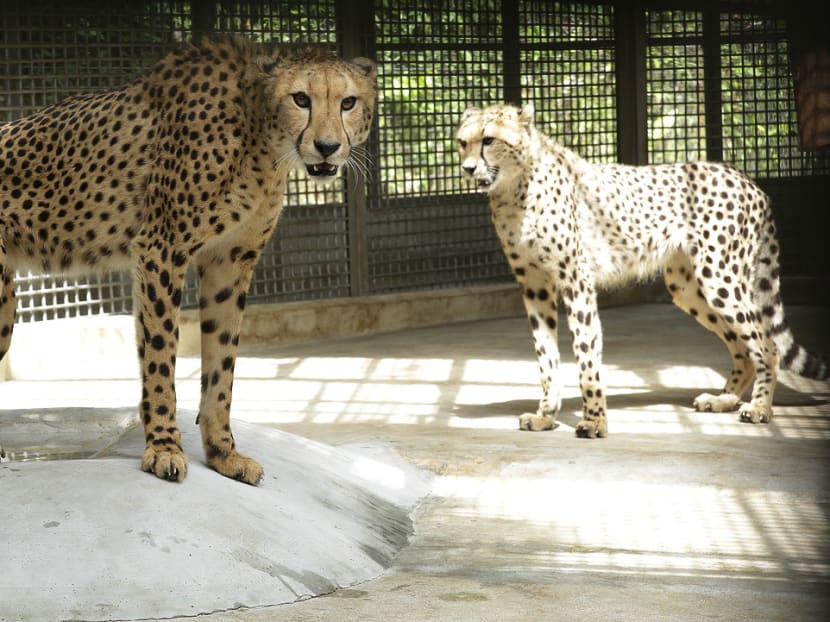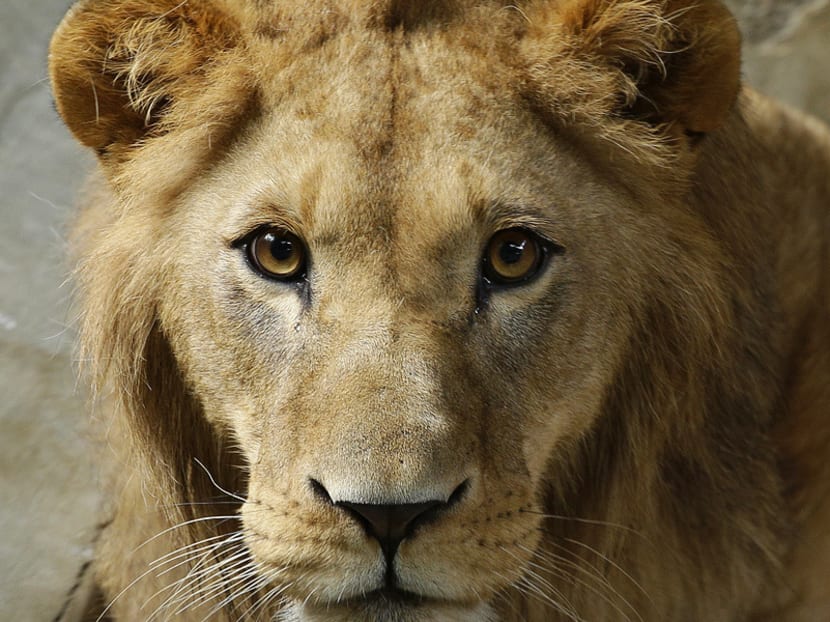More felines added to Singapore Zoo
SINGAPORE — Two white tigers, four cheetahs and an African lion. This is the line-up of cats soon to make their debut at the Singapore Zoo in the coming months.



SINGAPORE — Two white tigers, four cheetahs and an African lion. This is the line-up of cats soon to make their debut at the Singapore Zoo in the coming months.
The pair of white tigers are first to make its public appearance.
After arriving on Jan 15 this year from Indonesia’s Maharani Zoo, white tiger siblings, Pasha and Keysa have completed their month-long quarantine. And visitors may be able to catch the siblings most afternoons when they are brought to the white tiger exhibit to be conditioned to the environment.
The new duo spend their time sniffing and stalking their habitat and Wildlife Reserves Singapore (WRS) said once keepers are confident the two-year-old brother and sister pair are comfortable, they will take turns with Omar, the zoo’s 15-year-old white tiger, to prowl the tiger habitat at different of the day.
As Omar is getting on in age, there are plans to further enhance the collection in the event he passes on, WRS added.
Another two pairs of cheetahs – which arrived from South Africa’s De Wildt Cheetah and Wildlife Centre on Jan 14 – are next in the line.
Two males, Indiana and Obi, will be introduced to the exhibit this month, while the new females – sisters Maya and Herculina – will continue to get acquainted with Kima, an older cat at the zoo.
Although there’ll be more cheetahs at the zoo, visitors will likely only spot two or three of them at any one time initially. This is because the sexes will be displayed separately in preparation for future breeding opportunities, WRS explained.
As for the African Lion called Timba from Dierenpark Emmen in the Netherlands, visitors will have to wait till later this year, after his harem of three females arrive in March.
In the meantime, keepers have started to conduct medical training for the two-year-old male in the off-exhibit den, so that it is less stressful for it when it goes through routine health checks in the future.
Dr Cheng Wen-Haur, WRS chief life sciences officer said: “As part of our collection planning process, we routinely exchange captive-bred animals with other zoological institutions to ensure we have the appropriate numbers for exhibition and education purposes.”
“New bloodlines are also essential to maintain genetic diversity which is all important for zoos to ensure sustainable captive populations.”






